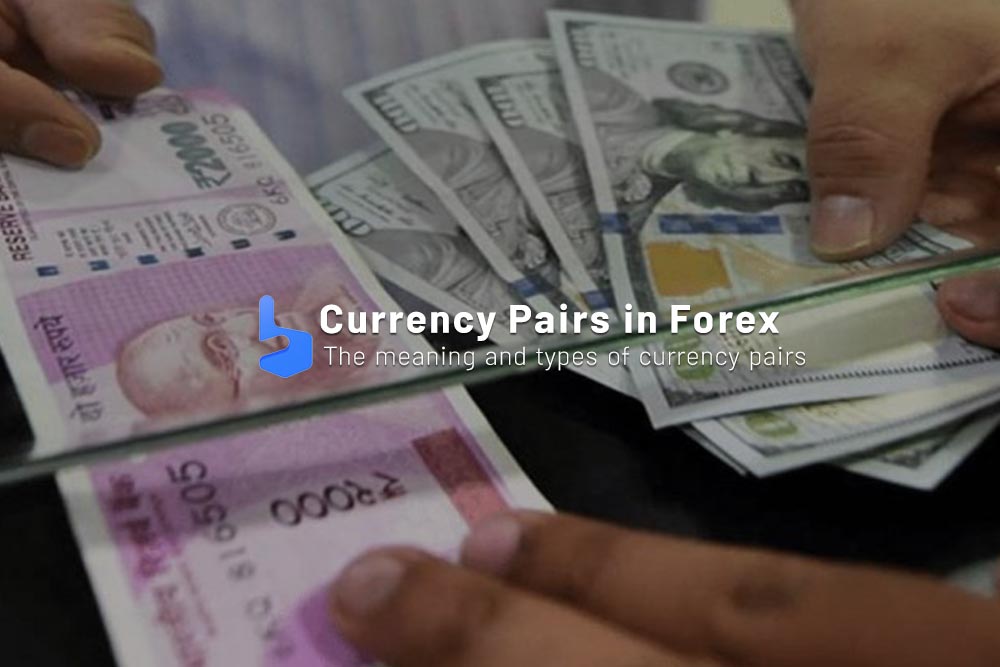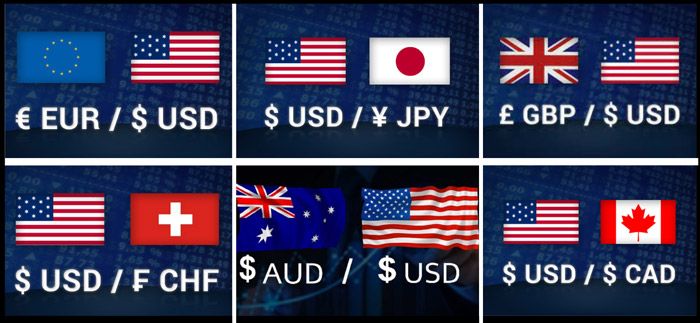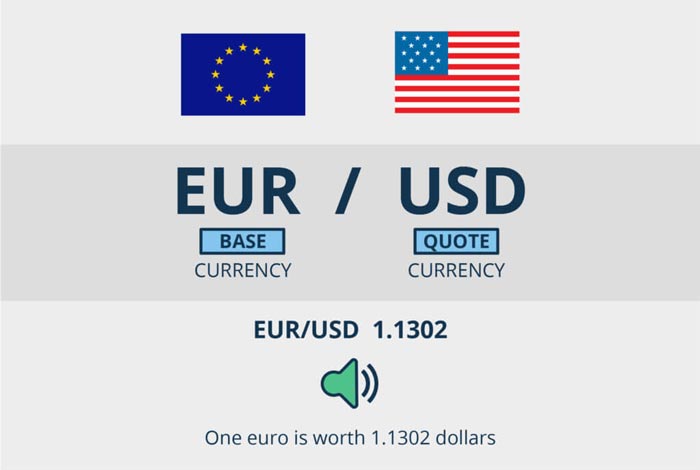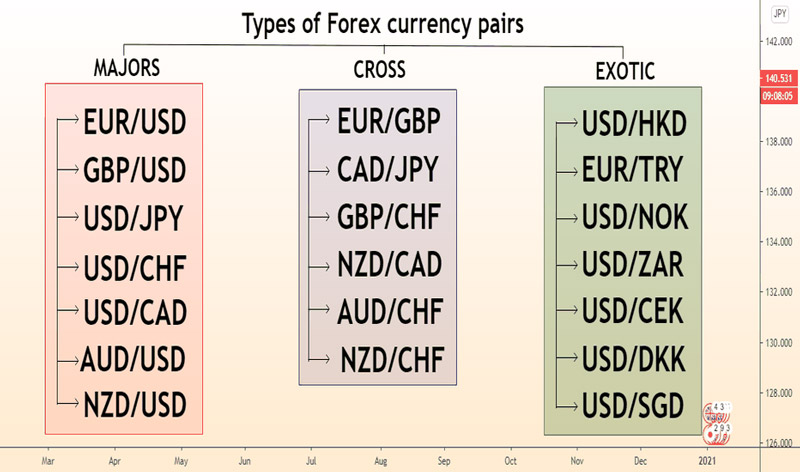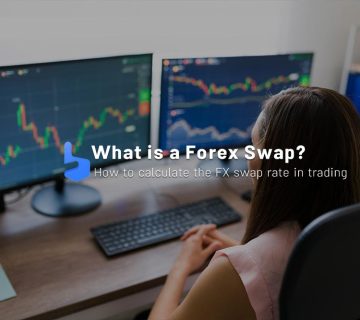What you are about to read:
Currency pairs in Forex form the most fundamental topics and concepts of the market, serving as the primary tools for trading. In Forex, currencies are always traded in pairs, indicating the exchange rate between two different currencies. Understanding the dynamics of these pairs is essential for anyone entering the world of Forex trading.
This article from Brokerland delves into what currency pairs are, explains how they are structured, and why they play a crucial role in Forex transactions. With a grasp of their principles, traders can navigate the complexities of the market, make informed decisions, and increase their chances of success in the exciting realm of Forex trading.
What is a Currency Pair?
In the broad perspective of the foreign exchange (Forex) market, a currency pair serves as the foundation upon which all trading activities are built. It is a combination of two different currencies that are traded against each other in the Forex market. They represent the exchange rate between the two currencies and reflect the relative value of one currency compared to the other. Sometimes, different pairs have relationships and dependencies with each other, referred to as the correlation of currency pairs.
Each currency pair in Forex is composed of a base currency and a quote currency. The base currency is the first currency listed in the pair and indicates the currency a trader wants to buy or sell. On the other hand, the quote currency is the second currency listed and represents the currency used to conduct the trade.
For example, in the common pair EUR/USD, the Euro (EUR) is the base currency, while the US Dollar (USD) is the quote currency. This pair represents the exchange rate at which one Euro can be traded for a specified amount of US Dollars.
Types of Currency Pairs in Forex
Currency pairs are typically divided into three major categories: major pairs, minor pairs (also known as cross pairs), and exotic pairs. Major pairs include highly traded currencies such as EUR/USD, GBP/USD, USD/JPY, and USD/CHF, generally featuring high liquidity and low spreads that make them attractive for traders. These spreads vary for different brokers and pairs, for instance, in Alpari broker, it might be 0.8 for the EUR/USD.
Minor pairs consist of currencies from major economies other than the US Dollar. Examples include EUR/GBP, AUD/CAD, and NZD/JPY. While these pairs may have slightly lower liquidity and higher spreads compared to major pairs, they still offer ample trading opportunities.
Exotic pairs involve the combination of a major currency and the currency of an emerging or less-traded economy. Examples include USD/TRY, GBP/ZAR, and EUR/PLN. Exotic pairs often have lower liquidity and wider spreads, presenting challenges for some traders.
When buying a currency pair in Forex, investors are buying the base currency and selling the quote currency. The bid price indicates the amount of quote currency needed to receive one unit of the base currency. On the other hand, when a pair is sold, the investor is selling the base currency and receiving the quote currency. Therefore, the selling price of a currency pair is the amount one receives for providing one unit of the base currency. However, in currency trading, investors are essentially selling one currency to buy another.
Base Currency and Quote Currency
In the currency market, the unit price of a currency is referred to as a currency pair. The base currency is considered the first currency in the pair, while the second currency is the quote or counter currency. These pairs are often denoted with six letters separated by a hyphen.
For example, in AAA/BBB, AAA is the base currency, while BBB is the quote currency.
Factors Affecting Currency Pairs
The following factors influence currency pairs:
- Interest Rates
- Gross Domestic Product (GDP)
- Federal Reserve Actions
- Other Economic Announcements and Forex News
Types of Currency Pairs in Forex
The most actively traded currency is the Euro against the US Dollar, known as EUR/USD. For better understanding, consider this example: It’s the year 2025, and Jack plans to travel to New York. He resides in Canada and only has Canadian Dollars. So, he goes to a currency exchange and wants to convert his Canadian Dollars (CAD) to US Dollars (USD). The exchange rate is quoted as USD/CAD = 1.3, meaning 1 US Dollar equals 1.3 Canadian Dollars.
In our example, USD is considered the base currency, and CAD is the quote or counter currency. Thus, Jack can exchange 1.3 Canadian Dollars for each 1 US Dollar at the currency exchange.
Major Currency Pairs
Globally, various currency pairs are categorized based on their trading frequency and volume. Using the US Dollar as a benchmark, currencies with the highest trading volume against it are known as major currencies. The list of major pairs includes but is not limited to:
- EUR/USD (Euro/US Dollar)
- GBP/USD (British Pound/US Dollar)
- AUD/USD (Australian Dollar/US Dollar)
- USD/CAD (US Dollar/Canadian Dollar)
Minor Pairs
Pairs not associated with the US Dollar are called minor or cross currency pairs. While these pairs may have slightly less liquidity and higher spreads compared to major pairs, they still offer plenty of trading opportunities. Examples include EUR/GBP, GBP/JPY, and EUR/CHF.
Exotic Pairs
When a currency from a developing or less-traded economy is paired with a major currency, it’s termed exotic. Examples include USD/TRY, GBP/ZAR, and EUR/PLN. Exotic pairs often have lower liquidity and wider spreads, posing challenges for some traders.
Final Thoughts
In this Forex tutorial from Brokerland, we’ve covered some of the most fundamental concepts in the Forex market, aiming to explain them clearly and simply for you. If you have any questions or need guidance on this topic, feel free to write your questions below this article, and we’ll respond to them at the earliest opportunity. Additionally, please share your comments with us.
Currency pairs in Forex play a vital role as they enable traders to speculate on the fluctuations in value between different currencies. Traders, by analyzing the market and predicting the future direction of a pair, can enter buying or selling positions to make profits. These pairs are categorized into three main types: major, minor, and exotic, each having different spreads in various forex brokers.

